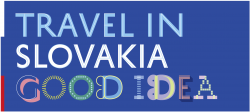This is the archival site of the former V4 portal. As of July 2024, it is no longer updated.
Visit visegrad.group for the current website.
Visit visegrad.group for the current website.

Thu 8 January 2026
Warszawa (PL)
4/2°C
| Tue | Wed | Thu | Fri | Sat |
|---|---|---|---|---|
| 1 | 3 | 5 | 6 | 8 |
Thu 8 January 2026
Praha (CZ)
6/2°C
| Tue | Wed | Thu | Fri | Sat |
|---|---|---|---|---|
| 6 | 5 | 8 | 8 | 9 |
Thu 8 January 2026
Bratislava (SK)
6/-1°C
| Tue | Wed | Thu | Fri | Sat |
|---|---|---|---|---|
| 8 | 6 | 7 | 8 | 8 |
Thu 8 January 2026
Budapest (HU)
5/-2°C
| Tue | Wed | Thu | Fri | Sat |
|---|---|---|---|---|
| 6 | 6 | 6 | 9 | 8 |
Gyarfášová, Oľga: Visegrad as Viewed by Citizens
Visegrad cooperation has a clear political and diplomatic dimension, but it is lived and created by ordinary people - neighbors and regional partners who are linked by their shared history. For better and for worse.
The main goal of the research project called "Visegrad Cooperation - How it is Viewed by the Citizens of the Four Countries" - was to discover what the citizens of the individual countries think of Visegrad. Do they even know what it is? Where do they see their common interests as lying? What approach do they prefer in European integration? How do they regard each other? Who is closest to whom, and where is the "mental gulf" the greatest? These questions and others were answered by a sociological survey that, thanks to the support of the International Visegrad Fund, was done in 2001 and again in 2003. Both surveys were coordinated by the Institute for Public Affairs in Bratislava.
The following is a summary of the main findings of both surveys. Since they were carried out, the Visegrad members have become members of the European Union and are facing new challenges. Howevet the framework of cooperation built by the Presidents of the then three states in February 1991, however, remains with us.
Visegrad visibility - do people know what it's all about?
People's opinions on foreign policy issues more than anywhere else tend to reflect the opinions of politicians and the opinion-shaping elite. For this reason it is not surprising that we find the greatest awareness of what Visegrad cooperation means in Slovakia. In 2003, some 56% of respondents said they were familiar with the term and knew what it meant; this compares to 44% of Hungarians, 39% of Poles and 35% of Czechs (see Graph 1 below). These findings reflect the great interest of Slovak politicians in close relations within Visegrad. After 1998, regional cooperation became part of their strategy of making up integration deficits, and Slovakia became the motor of the revitalization of these platforms. Slovak politicians frequently stated that Slovakia's road to Brussels led through Visegrad. This undoubtedly affected the visibility and importance of cooperation in the eyes of the Slovak public. In the 2003 survey some very positive changes were visible compared to the 2001 survey mainly in Poland and Hungary, where the ratio of informed citizens rose by 12 and 9 percentage points respectively (see Graph 1). This growth was likely related to those countries' approaching membership in the European Union. Their citizens were more frequently exposed to debates on how to proceed, and a common interest existed connecting all four countries.
Graph 1:

Does Visegrad cooperation have any value? This question is often asked by opinion writers, and often the answer is negative. That's understandable. Top level meetings that are full of formal expressions of mutual understanding cannot hide the fact that when the cards are down, and concrete interests or sensitive disputes are at stake, diplomatic mutuality goes out the window and a tough rivalry takes over. Most of the inhabitants of the member countries, however, answer positively when asked if Visegrad has any meaning. The strength of this agreement varies widely, however (see Graph 2 below). Again it was Slovakia that in both surveys exhibited the greatest share of positive responses (over 70%). The greatest contrasts are visible between Slovakia and the Czech Republic, which formed the two poles in the range of opinions. Czech society in the mid-1990s enjoyed the image of "integration poster child". Czech Prime Minister Václav Klaus on more than one occasion referred to Visegrad cooperation as an outmoded concept. The dismissive approach of the political elite trickled down to the views of the public. Nor was the situation much better in Hungary, where, in its long pre-entry marathon, Hungary portrayed itself as a "tough solo player" who bet everything on its economic performance. Overall we can say that each country showed majority support for cooperation (or, in the case of the Czech Republic, almost majority), but with significant differences. The strongest support was seen in Slovakia and Poland, while a large part of the population of the Czech Republic and Hungary took a reserved view.
Graph 2:

Citizens of Visegrad member countries felt that the group should work together more closely above all in the economic area. While in 2001 common interests included also coordinating each country's entrance to the EU, in 2003 - that is, one year before entry - the economic content of this coordination had the upper hand.
Graph 2:

Citizens of Visegrad member countries felt that the group should work together more closely above all in the economic area. While in 2001 common interests included also coordinating each country's entrance to the EU, in 2003 - that is, one year before entry - the economic content of this coordination had the upper hand.
Mutual perceptions and alliances of trust
The nations of Central Europe carry an enormous load in their historical memories from their common past. They create images of their neighbors from both recent and ancient history, in which everyone owes something to the others, and everyone at some point wronged the others. On the other hand, these nations are also connected by a certain similarity in their historical "fate". The images these countries have of each other do not always correspond with reality, and often rest on clichés, stereotypes or prejudices. In our research, as the simplest measure of how these nations view each other, we used the yardstick of trust. To what extent do the individual nations trust each other? If we were to construct a "sociogram of trust" for the Visegrad nations, it would look as follows:
• the strongest bond of trust is between the Czechs and Slovaks, and this goes both ways;
• the least trust is between the Slovaks and Hungarians, and again this is mutual;
• the Poles trust the Hungarians most, and vice versa.
It appears that the absence of fields of conflict, whether historical or current, has a positive impact on how nations view each other.
This "sociogram of trust" (see Graph 3 below) is the result of centuries of mutual relations and stereotypes, and informs an image of "us and them" that is part of the national identity of each nation. In terms of the Slovaks, relations with Hungary have long been reserved. On the other hand, as many surveys have confirmed, the good news is that relations between the Czechs and Slovaks are very warm, and are dominated by feelings of trust, openness and mutual closeness. The attitudes of the public of both nations show no trauma from their 1993 "divorce", nor any tendency to blame each other for anything. Poland is a problem-free partner for Slovakia, although bilateral relations between the two countries have definitely not reached their potential. Despite the great dynamism of the past two or three years, we still see what historians used to call "two neighbors with their backs to one another"; relations between the two lack not only negative feelings but also positive ones.
It appears that the absence of fields of conflict, whether historical or current, has a positive impact on how nations view each other.
This "sociogram of trust" (see Graph 3 below) is the result of centuries of mutual relations and stereotypes, and informs an image of "us and them" that is part of the national identity of each nation. In terms of the Slovaks, relations with Hungary have long been reserved. On the other hand, as many surveys have confirmed, the good news is that relations between the Czechs and Slovaks are very warm, and are dominated by feelings of trust, openness and mutual closeness. The attitudes of the public of both nations show no trauma from their 1993 "divorce", nor any tendency to blame each other for anything. Poland is a problem-free partner for Slovakia, although bilateral relations between the two countries have definitely not reached their potential. Despite the great dynamism of the past two or three years, we still see what historians used to call "two neighbors with their backs to one another"; relations between the two lack not only negative feelings but also positive ones.
Graph 3:

Who wants to cooperate the most? We do!
The survey respondents were also asked to evaluate their own willingness and that of other countries to work together within the V4 framework. The results pointed to an interesting phenomenon - the inhabitants of all countries regarded themselves and their country as the most willing to cooperate with the others. In concrete terms, 34% of Czechs awarded the greatest degree of willingness to the Czech Republic, while the other three countries scored about 20% each from the Czech respondents. Meanwhile, 22% of Hungarians gave highest marks to Hungary, while 19% went to Poland, and 9% and 7% respectively to the Czech and Slovak Republics. Polish respondents saw things the same way: 42% put their own country in first place, while the other three states scored from 14% to 18%. Almost half of Slovak respondents favoured their own country, while about a quarter chose Poland and the Czech Republic, and 22% chose Hungary (see Graphs 4 to 7).
While most citizens tend to believe their own country is the most willing to cooperate, in terms of average standard of living and the level of democracy, Slovaks tend to believe that their neighbors and especially those living to the West have better lives.
Within the European Union together, or everyone for himself?
The Visegrad members along with another six countries entered the European Union on 1, May 2004. During the years that preceded this event, the question of whether the entry process should be coordinated or whether every country should proceed on its own steam had been extensively debated. Findings from this period have more than just an historical interest; they also reflect the state of the publics and the political elites, which may continue to work together following their entry to the EU. In the 2003 survey, the Poles were most in favor of close Visegrad cooperation within the EU, followed by the Slovaks, while the Czechs and above all the Hungarians preferred to go solo (Table 1).
Table 1:

On the other hand, the majority of the citizens of the four member states shared the opinion that following EU entry they would become "second-class citizens". The feeling that some members of the enlarged EU club were more equal than others was undoubtedly strengthened by certain results of entry talks, and various "transitional periods" for the new members to gain full EU rights, such as in the free movement of people. This feeling did not have a major negative impact on support for EU entry, but formed more of a perception of how things worked in the EU. If we compare the results of the 2003 survey with 2001, it is clear that the feeling of being "poor relations" remains a majority one in all four countries, although it has fallen the most in Poland, where the public is increasingly coming to understand the country's "weight" as a European player.
What's ahead?
The individual members of the Visegrad Group face very different problems. Their internal and external political situations, despite many similarities, still have too many dissimilarities to allow them to take a united view of mutual cooperation. At the time of our survey, the Slovaks had the greatest expectations of Visegrad cooperation, as they regarded regional cooperation as a means of catching up with the other three in integration. Pro-cooperation views ruled in the other countries as well, albeit with less enthusiasm. To be sure, much depends on whether and to what extent people identify with regional interests, and to what extent politicians and other elites are able to communicate these interests to their citizens. Cooperation will also be helped by examples of what it means in practice. If it can be shown that people are materially better off from a coordinated rather than an individual approach, that will be a strong argument supporting the continuation of Visegrad also under the new conditions in the EU. The V4 is a strong player and can be a persuasive advocate of regional interests. True cooperation needs more than a formal framework, however: It must have concrete contents as well. Among the priorities of the V4 in the years ahead are financing for the future, their entry to the Schengen zone, and, in the longer term, to the EMU. The extent and content of Visegrad cooperation will be determined above all by the political elites. But whatever happens, the countries of the V4 will not cease to be neighbors and close regional allies, and relations between them will continue to be created and lived not only by politicians, but also by ordinary people.
The research on representative samples of the adult population according to a single questionnaire was carried out in all four countries in November and December 2001 and May and June 2003. The final results of the project can be found in the publication Visegrad Citizens on the Doorstep of the European Union (Gyárfášová, O., ed.), Institute for Public Affairs, Bratislava 2003. The book is available in .pdf format at www.ivo.sk.







